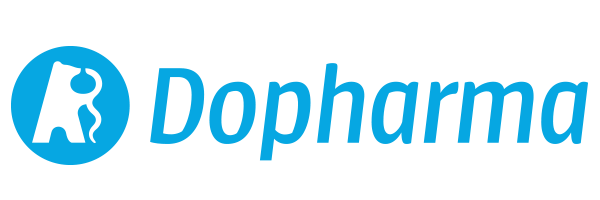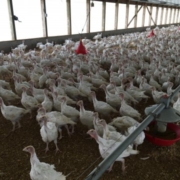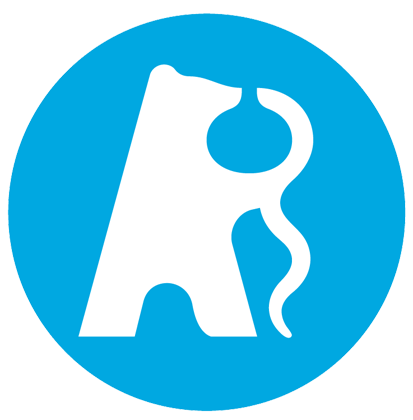Marcin Śmiałek, Andrzej Koncicki
Chair of Avian Diseases, Department of Veterinary Medicine, University of Warmia and Mazury in Olsztyn, Poland
A well-functioning gastrointestinal tract providing a means of absorbing essential nutrients as required for rapid feed conversion is essential to avian health, which translates to profitability of production in large-scale poultry farming. There are many pathologies of the avian gastrointestinal tract, but the literature devotes little attention to cases of pendulous crop, which have been an inherent part of poultry production for many years.
The avian crop is a thin-walled bulge at the posterior part of the oesophagus which contains feed whenever the gizzard is full. Feed in the crop is not digested but is only moistened. When the stomach empties, the contents of the crop are transported further along the gastrointestinal tract by contractions of the muscles in the crop wall. There are three muscle layers which comprise the wall of the crop, which are enveloped in connective tissue. The crop is attached to its surrounding tissue by two muscles which stabilise it by having deep attachment points in the skin and are involved in emptying it. Contractions in the crop are stimulated by the vagus nerve.
The function of the crop may be defined as a store of feed, and it enables birds to “survive” the nocturnal period when they take no feed from their surroundings by being this store and thereby prolonging the time during which nutrition is supplied to the subsequent parts of the gastrointestinal tract. This action is also why differences in the extent to which the lumen of the crop is full of nutritive matter can be observed over the course of the day. In comparison with the morning, proportionally more feed is stored in the crop in the afternoon and evening. This proportional relationship was identified from confirmed higher feed intakes by domestic birds in the afternoon. It nevertheless transpires that the extent to which the crop is full has no bearing on how much feed is taken or on the bird’s satiety, as indicated by the extents to which the crop is full in birds differing greatly irrespective of the availability of feed. The main regulators of feed intake by birds are the physical form of the feedstuff, the activation of chemoreceptors which sense concentrations of glucose, amino acids and lipids and the activation of mechanoreceptors in various parts of the gastrointestinal tract (e.g. the extent of gizzard expansion), the protein and energy content in the portion of feed, the surrounding temperature, access to water, and the competence of the nervous and endocrine systems.
As the crop empties, it contracts at 60–90-second intervals, these contractions being dependent on the extent to which the stomach is full as well as on the type and consistency of the nutritive substance filling the crop. Soft contents are passed out of the crop more quickly than grain seeds, for example. However, the peristalsis of the crop can be disordered by certain avian pathologies, which can lead to impaired emptying of the residual excess of feed it contains.
Pendulous crop
A crop which is enlarged and greatly extended and which is hanging at the front of the bird’s chest is termed a “pendulous crop” (PC). In palpation through the skin, such a crop is soft and fluid can be felt moving inside (this can be compared to how a bag filled with water would feel if palpated), and this should be distinguished from a crop filled with ingested feed and functioning normally (when it has a consistent, dough-like feel).
The disorder of PC may be described as a pathology with complex aetiopathogenesis, and its causative factors are probably environmental, nutritional, and infection-related just as they are toxicity-related. Among the numerous causes, the majority of which have nevertheless not been scientifically proven, the most frequent reasons for the occurrence of pendulous crop are:
- Overfilling (particularly in chicks during their first days of rearing), which results in stretching of the elastic fibres of the connective tissue holding the muscle layers of the crop wall together. A consequence of the intensive stretching of these fibres may be their tearing, which leaves the crop unable to regain its original shape and dimensions. Alongside this, overfilling leads to damage to the integrity of the crop muscles, causing impairment of their capacity to contract and impairment of peristalsis. In such situations water or feed are not passed out of the crop completely, creating ideal conditions for the microorganisms such as bacteria, fungi, and protozoa which start secondary infections
- Excessive drinking, which most often is related to high summer temperatures in the poultry house and overheating of birds. In such situations the volume of water drunk may rise by 400%
- Excessive water intake occurs when birds are dehydrated, which most often happens when drinkers are defective or when transport of chicks from the hatchery to the premises where they will be reared takes too long and no provision is made for chicks to drink. Dehydration can also occur in the course of certain diseases such as necrotic enteritis or candidiasis
- Impurities in water which negatively affect its taste. In such situations birds drink copious and excessive amounts when the impurities are completely removed from the water or their concentrations fall to a low enough level not to affect its taste
- Excessive feed intake (following a period of feed deprivation, e.g. as chicks endure during transport of long duration)
- Systems restricting feed and water provision
- Physical or chemical irritation of the crop mucous membranes, which predisposes birds to secondary infections of those membranes and consequently puts them at risk of damage to the underlying muscles and connective tissue fibres
- Excessive admixture of dextrose in bird feed, which propagates Saccharomyces tellustris yeast and causes pronounced extension of the crop because of overproduction of gases
- Infection with the flagellate Trichomonas gallinae, which most often occurs when bird husbandry conditions are poor, and particularly when poor quality water is provided
- Damage to the innervation of the crop (by Marek’s disease or deficiency in group B vitamins, in particular B6 (pyridoxine))
- Poisoning with culinary salt, in the course of which the amount of water drunk increases dramatically
Besides the causes listed, a genetic predisposition in certain poultry breeds is often seen as the main underlying cause of PC; however, as yet no data confirm this theory.
The disease has a chronić course and few birds return to full health. Most often, only single individuals in a flock are affected by PC, but in extreme cases it may affect a reasonably high double-digit percentage of birds (8). Although birds may even live for 2 years with PC and broilers may attain slaughter age, they prevailingly demonstrate poorer body weight gains as a result of less effective utilisation of feed, despite retaining their appetites. This distinguishes the course of pendulous crop from impacted crop where the conditions frequently present the same signs. Mortality in flocks containing birds displaying typical clinical signs of PC may be as high as 50% of those birds. In these cases, the most common causes of death are ruptures of severely enlarged crops due to physical injuries, suffocation by heavily liquified and diluted crop contents, malnutrition as the effect of poorer utilisation of feed or hindrance of feed intake, and secondary infections.
The crop undergoes anatomical and pathological changes in birds with PC and in addition to its extreme enlargement and full content of semi-liquid matter with a foul odour, thinning and ulceration of its mucous membrane is frequently observed in necropsy. These lesions are extensive and disseminated necrotic foci. Besides these lesions, white spots resulting from secondary fungal infections are often noted in gross examination of the mucous membranes of the crop. In cases of PC caused by Trichomonas gallinae infection or infection with these flagellates where PC has not developed, isolated pyramidal lesions are observed and protozoa can be isolated from the mucous membrane.
Lesions are not noted during necropsy in other internal organs, with aspiration pneumonitis and the presence of undigested feed in the lumens of the trachea and bronchi only observed in extreme cases after suffocation by liquified and diluted crop contents.
Despite various therapeutic modalities for birds with PC described in the literature, therapy is not administered in large-scale poultry rearing operations. This is because of the costs associated with the treatment procedures and also because of frequent recurrence of PC despite therapy having been given. For this reason every care must be exercised to minimise the potential for PC in flock birds as much as possible. This prevention can be achieved principally by maintaining good conditions for rearing birds, ensuring the functionality and appropriate hygienic standards of drinking and feeding systems, providing feed and water of suitable quality, and keeping these free of impurities which affect their aroma and taste negatively. It is also necessary to monitor the amounts of feed consumed and water drunk by birds constantly, and on hot summer days in particular it is necessary to carry out surveillance of the regularity of birds’ eating and drinking.







